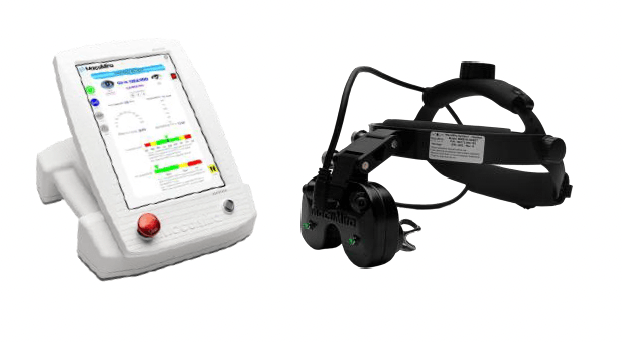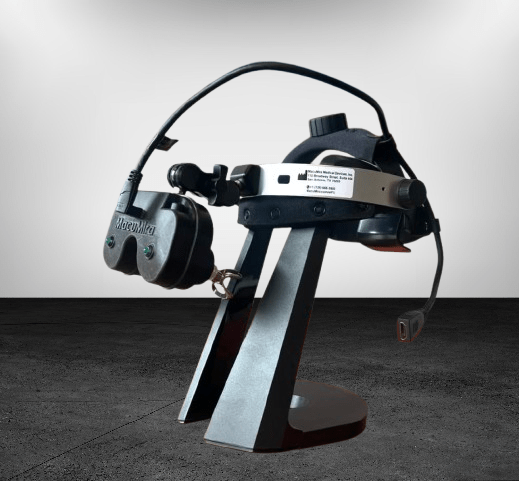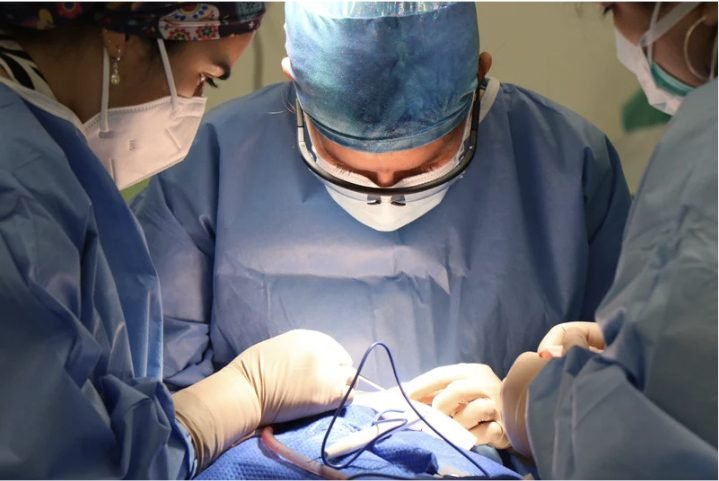MacuMira: What’s New & Why It Matters for Dry AMD patients
Dry Age-Related Macular Degeneration (dry AMD) has long been a challenging disease to manage: vision loss is gradual, patients are often told the only options are monitoring and lifestyle/supplements, and there was no proven way to restore lost central vision. An earlier blog post — MacuMira Treatment for Dry Age-Related Macular Degeneration — introduced MacuMira as a breakthrough, and now with Health Canada approval and the latest clinical trial data, there’s even more reason to understand what this treatment can do. Here’s an up-to-date, thorough look at the most common questions, the evidence, and what prospective patients need to know.
What Has Recently Changed / What Is New
- Health Canada approval: As of September 2025, MacuMira’s retinal microcurrent stimulation device is officially approved for improving visual function in dry AMD patients. Newswire
- National availability expanding: It is now offered in more than 150 clinics across Canada. Newswire
- Strong safety profile in broader use: Over many hundreds or thousands of treatments delivered in Canada, with no device-related adverse events reported in studies or early clinic use. Newswire+2MacuMira |+2
These updates build upon what was already in your prior blog post: that MacuMira is non-invasive, microcurrent based, manageable in clinics, and can improve vision. But now there is formal regulatory backing, larger numbers of providers, and more confidence in safety and accessibility.
How MacuMira Works (Brief Recap + New Insights)
From original post, plus the new data:
- Mechanism: MacuMira uses low-level microcurrent stimulation delivered through closed eyelids, targeting the retina, especially the retinal pigment epithelium (RPE) and the macular region. It appears to improve mitochondrial function (boosting ATP), reduce accumulation of toxic waste (drusen/lipofuscin), reduce inflammation, and support retinal cell health. MacuMira |+2MacuMira |+2
- Treatment protocol:
- Loading phase: Four treatment sessions over ~10 days, each session lasting ~32 minutes. MacuMira |+2stoneycreekeyecare.com+2
- Maintenance: One treatment every ~2.5-3 months (usually every three months) to preserve gains. MacuMira |+2InVision Eyecare |+2
- What to expect during a session:
- Seated or reclined, headset / eye cups placed over closed eyelids.
- Microcurrent delivered; some patients feel mild tingling or see transient light patterns (“phosphenes”) — considered normal. MacuMira |+1
- Session takes ~30-32 minutes, no surgery, no injections, no drugs. MacuMira |+2Newswire+2
What Does the Latest Clinical Evidence Show?
The clinical trial data (published in International Journal of Retina and Vitreous) plus post-regulatory reports give us a clearer picture of efficacy and safety.
| Measure | Treatment Results | Comparative / Placebo (Control) |
|---|---|---|
| Visual Acuity (ETDRS letters) | On average +8.2 letters improvement in treated patients over 30 weeks. MacuMira |+2Newswire+2 | The placebo group lost ~2 ETDRS letters on average over same period. MacuMira |+2MacuMira |+2 |
| Proportion of Patients with 10+ Letter Gain | ~48% of treated patients gained 10 or more letters. MacuMira |+2MacuMira |+2 | — |
| Contrast Sensitivity / Visual Function | Improved contrast sensitivity in many patients, often noticed by ~4 weeks after starting treatment. MacuMira |+2MacuMira |+2 | — |
| Safety / Adverse Effects | No adverse device-related effects reported in trial or broader clinic use. Newswire+2MacuMira |+2 |
Also notable: many patients report noticeable changes (better sharpness, better contrast, less glare, improved reading) within the first 10 days of treatment. MacuMira |+2MacuMira |+2
Who Is a Good Candidate & What are Limitations
Good candidate if you:
- Have been diagnosed with dry AMD (non-exudative). MacuMira |+1
- Are in early or intermediate stages, or mild to moderate vision loss. Even for more advanced, improvements may be possible, but earlier intervention tends to lead to more gain. (The trial included various degrees of dry AMD.) MacuMira |+1
- Can commit to the initial loading sessions and then periodic maintenance appointments.
What MacuMira does not do / what to be aware of:
- It is not a cure. Vision that’s already lost may not be fully restored. The treatment improves function and may slow further decline. MacuMira |+1
- It cannot address the pathology of wet AMD (i.e., when new blood vessels are leaking). MacuMira is specific to dry AMD. stoneycreekeyecare.com+1
- Results vary. While averages are promising, not all patients will see large gains (e.g. 10+ letters). Some will see modest gains.
- Some symptoms (contrast, glare, night vision) may improve faster or more noticeably than central reading acuity, especially if central damage is severe.
Frequently Asked Questions (Updated)
Q: When will I start seeing improvement?
Many notice changes within the first 10 days (during the loading phase) — improved contrast, clarity, less glare, sometimes sharper reading. More measurable improvements (ETDRS letters) often observed by 4 weeks. MacuMira |+2MacuMira |+2
Q: Is the improvement lasting?
In the trial, treated patients maintained their gains for the duration (30 weeks), provided maintenance treatments are done. Without follow-ups, there’s risk that vision may decline again. MacuMira |+2MacuMira |+2
Q: How safe is this treatment?
Very safe in clinical trials and ongoing use. No device-related adverse events reported; stimulation levels are gentle; no injections, no surgery. Mild tingling or vision of light patterns may happen, but that is expected. MacuMira |+2MacuMira |+2
Q: Do I have to stop other treatments (supplements, etc.)?
No. MacuMira is intended to be complementary—not an exclusive alternative—to standard AMD management: diet/lifestyle, AREDS or AREDS2 supplements (if prescribed), regular monitoring. MacuMira |+1
Q: Cost / Access — is it covered?
As of now, MacuMira is being offered through many clinics; because it is a medical device, coverage depends on clinic, insurance plan, region. Patients should check with their eye care provider. The Health Canada approval should help with legitimacy for insurance claims. (Exact out-of-pocket cost numbers may vary.)
What to Do Next
If you or someone you know has dry AMD, here are steps to take:
- Confirm diagnosis and severity with your eye care professional (optometrist or ophthalmologist). Make sure it’s dry AMD, determine how advanced, assess current vision metrics (ETDRS, contrast sensitivity, imaging).
- Read your earlier post to understand fundamentals: MacuMira Treatment for Dry Age-Related Macular Degeneration. That gives context.
- Ask your clinic whether they offer MacuMira now. Since over 150 clinics across Canada are offering it, there may be one near you. Newswire+1
- Discuss expected outcomes: what are realistic gains for your vision, whether central or peripheral damage is present, what your maintenance schedule will be.
- Plan for ongoing follow-up: check vision, monitor retinal health regularly, combine with lifestyle/supplement strategies.
Summary: Why These Updates Matter
- The approval by Health Canada makes MacuMira an officially sanctioned treatment rather than experimental.
- Clinical trial data is strong: average gains of ~8.2 letters, nearly half of treated patients gain 10+ letters. Contrast sensitivity improvements too.
- Safety is confirmed: no adverse device-related events.
- Patients can expect improvements early, and if they maintain treatment, these improvements are likely to be sustained.
Get in Touch for a Free Consultation
If you’d like to explore whether MacuMira might be right for you, we offer free consultations.
Contact Us to set up your free consultation. We’ll review your history, vision test results, and discuss whether your dry AMD stage makes you a good candidate.







